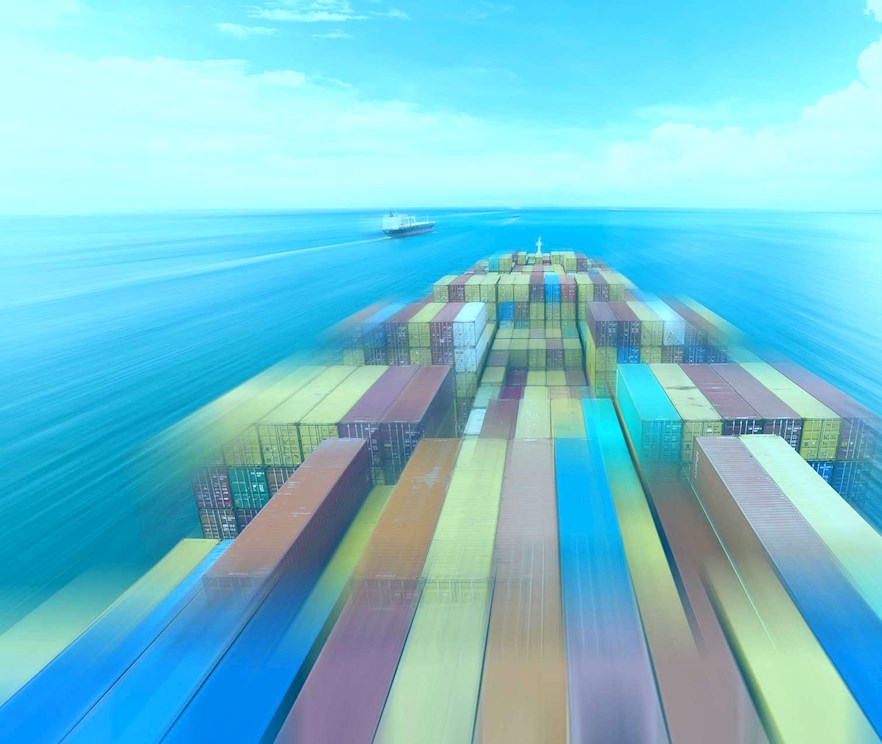Global supply chains are no strangers to disruption, whether caused by trade disputes, geopolitics or the unpredictable forces of climate change. Amidst these challenges, an often-overlooked vulnerability lies in supply chain data gaps. However, promising solutions are emerging as researchers and industry leaders collaborate on projects that have the potential to reshape supply chain management, empowering decision-makers to navigate obstacles more effectively.
Supply chain data gaps have far-reaching consequences, resulting in inaccurately predicted routes, containers stranded at ports and subsequent financial losses. Acknowledging the impact of accessible information, freight forwarders and logistics professionals are actively seeking solutions to bridge these gaps.
Digital platforms
We are engaged in industry-wide initiatives that address this issue, including our CARGOES Flow platform. The platform offers real-time tracking and insights, recognising the urgency to provide visibility into the often-opaque world of supply chains. While 79% of organisations lack sufficient visibility into their supply chains, CARGOES Flow steps in as a solution that offers granular visibility through its enterprise multi-vendor tracking tool for intermodal shipments.
End-to-end tracking is one of the standout features of CARGOES Flow, allowing businesses to monitor multimodal shipments from origin to destination. Insight Reports provide comprehensive overviews of logistics network performance, enabling decision-makers to optimise operations with informed precision. Real-time visibility facilitates agile responses to shipment delays and early arrivals, enhancing risk management strategies. The platform's SaaS-based solution additionally offers business intelligence, aiding in identifying inefficiencies and fostering collaboration with key partners. By integrating with third-party Geographic Information Systems (GIS) and utilising map-based visualisation, CARGOES Flow empowers superior decision-making through data-driven insights.
Industry collaboration
Beyond the realm of digital platforms, the marine services industry is actively contributing to comprehensive data collection initiatives. Collaborations like Swire Shipping's partnership with the National Oceanography Centre at Southampton University underscore the significance of oceanic insights. Through the collection of atmospheric data and water samples on Pacific routes, the value of sea-based data collection is brought to the forefront. Organisations like the World Ocean Council's Smart Ocean-Smart Industries Programme are rallying companies to contribute their sea installations to foster data collection.
Enhanced weather analytics have become crucial for businesses, enabling cost management, contingency planning and post-event recovery across sectors like food supply, manufacturing and logistics. The US National Oceanic and Atmospheric Administration (NOAA) recently upgraded its ocean sensor network and the Global Forecast System model for a more accurate 16-day forecast, benefiting sectors like logistics. IBM's acquisition of the Weather Company in 2016 led to innovative products, including IBM Watson Advertising’s Weather Analytics service in 2022, which utilises AI to uncover intricate relationships between weather and consumer behaviours, shaping marketing and supply chain strategies.
The commitment to addressing supply chain data gaps extends to the optimisation of voyages. Platforms such as Sofar's Wayfinder exemplify this commitment by integrating extensive data inputs with traditional weather models. This approach assists vessel operators in enhancing voyages and reducing fuel consumption, aligning with the industry's drive to mitigate greenhouse gas emissions.
The complexity of climate change
In the face of growing concerns about climate change, the disruptions caused by extreme weather events introduce an additional layer of complexity. The changing climate and the escalating frequency and severity of hazards have the potential to amplify supply chain disruptions. Climate-induced risks are no longer distant possibilities; they are actively affecting the present and future of supply chains.
As climate hazards become more imminent, businesses are urged to adapt their strategies. From constructing disaster-resistant plants to elevating inventory levels, adaptation measures are being explored to mitigate potential impacts. Semiconductor supply chains, for instance, consider building resilient facilities, while those relying on rare earth metals explore measures to shield against climate-induced disruptions.
The pursuit of filling supply chain data gaps highlights the industry's dedication to resilience and progress. In an environment where trade and logistics face ever-evolving challenges, initiatives and innovations like CARGOES Flow represent a paradigm shift toward data-driven decision-making. From oceans to intermodal shipments, the transformative power of real-time insights and climate-resilient strategies cannot be overstated.
With each milestone in closing these gaps, the supply chain ecosystem moves nearer to a future where disruptions are anticipated, managed and transformed into opportunities for growth. It’s a profound transformation that will reshape the global trade arena.
RELATED CONTENT

Cargoes Flow
The enterprise tracking tool for intermodal shipments to give you supply chain visibility, mitigate delays and monetary risks.
Read More
Freight Forwarding
Our full service freight forwarding solutions work hand-in-hand with our intercontinental shipping network and our roster of global ports and terminals, making sure we solve any supply chain challenges our customers face.
Read More








